Back To Basics ~ How Plants Work
Back To Basics ~ How Plants Work
As many are headed back to school in early September, we decided to get back to basics at the garden center. Why? Because although it’s easy for most people to say what they want a plant to do, or look like, it’s often harder to remember that plants grow in particular ways for a reason. In this post we look at the basic parts of a plant and explain why understanding the functions they provide are important for us to know.
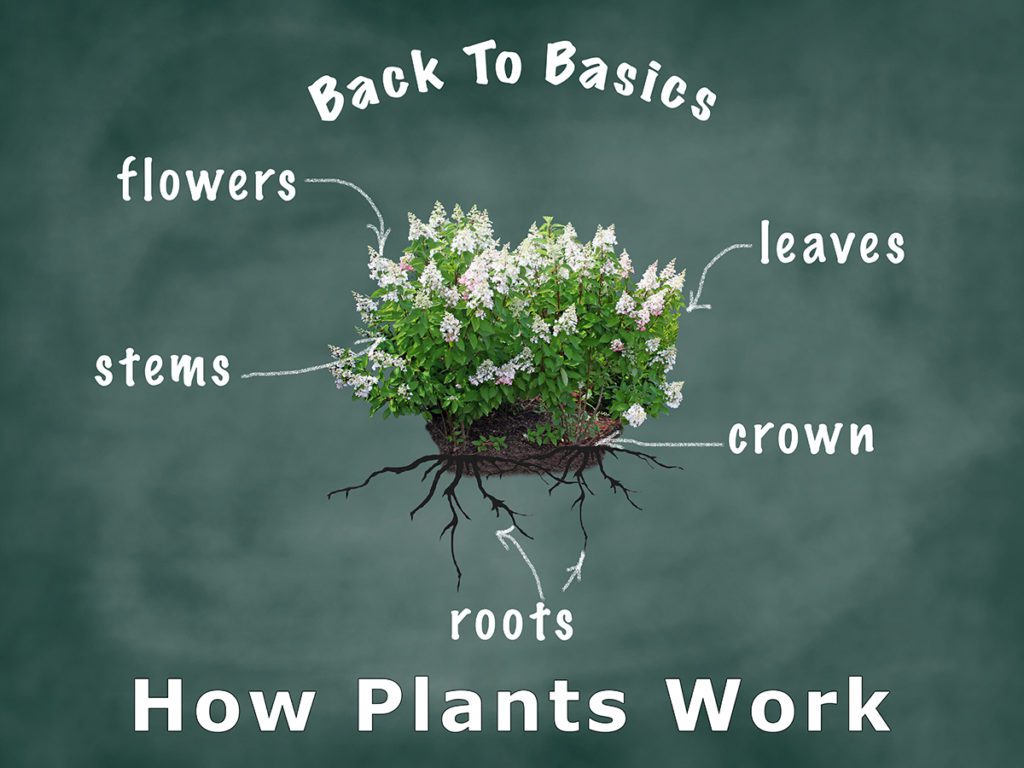
Plants are actually a system, and all of the various parts have a particular function that works for the benefit of the plant as a whole. We humans are often interested in only one aspect of that plant…for example, we want the flowers, or leaves that are green through the winter. But a plant’s ultimate goal has nothing to do with pleasing us and everything to do with pushing its genetics into the future. That’s every plant’s mission: to reproduce itself and produce offspring that will grow in future years.
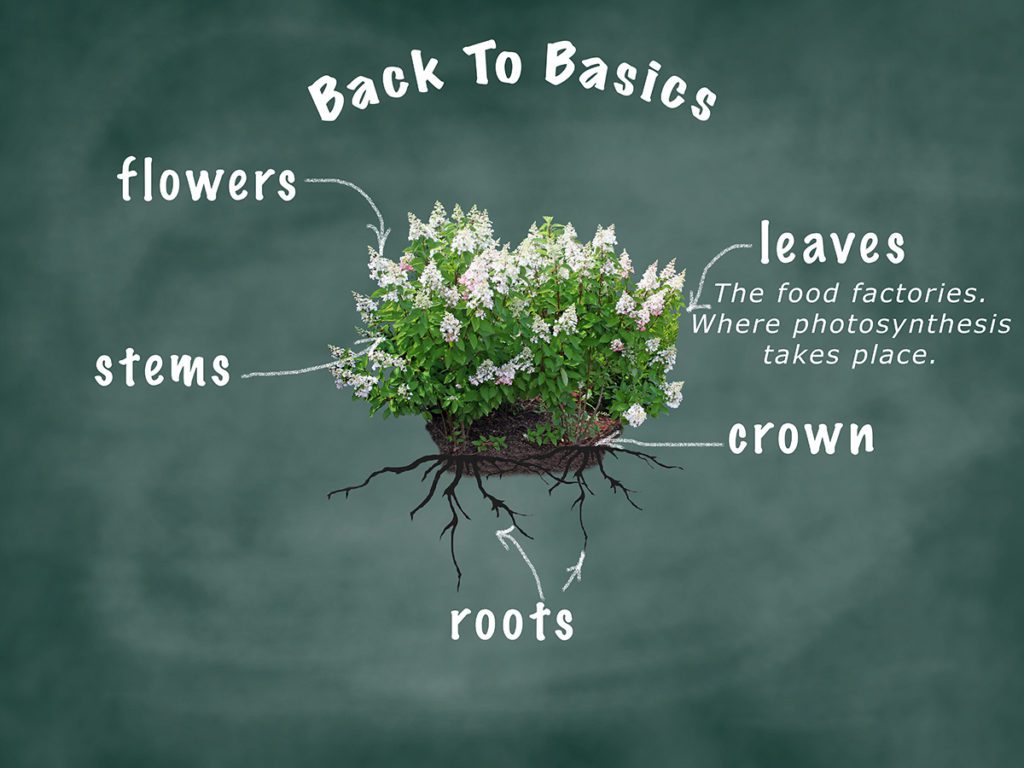
LEAVES – Understanding their purpose. Knowing that the leaves are the food factories for a plant is important because this helps us understand why it’s difficult to cut a shrub or tree back in an effort to make it smaller. When you prune a plant down, you remove a good amount of the factories that are producing energy that keeps the stems and roots alive. The plant tries to replace those leaves as quickly as possible so that all parts have the carbohydrates they need to sustain the plant’s future growth.
Understanding that the function of the leaves is to create the energy that keeps a plant alive is also important as we look at why a particular plant might have died after a drought or other circumstances that cause the foliage to fall off of the stems. Maybe the leaves fell off because the plant got too dry. Perhaps the leaves were eaten every year by caterpillars. Or maybe a plant’s foliage got hit repeatedly with salt from a road, or cleaning products from the power-washing of a house or deck. No matter what caused the dropping of leaves, no foliage mean no energy was produced to keep the plant growing.

CROWN – Understanding this particular place helps us to better care for our plants. Most of the plants we grow want the crown to be right at the surface of the soil, while the roots are just below, heading into the ground. Knowing that the crown wants to be above the ground but the roots want to be below reminds us not to pile too much dirt or mulch at the base of our plants. We also need to remember that in our region this area doesn’t naturally stay constantly wet. Some aquatic plants grow in ponds, lakes and streams, of course, and they are adapted to having “wet feet,” but in our landscapes keeping the crown of a plant too wet can promote rot.
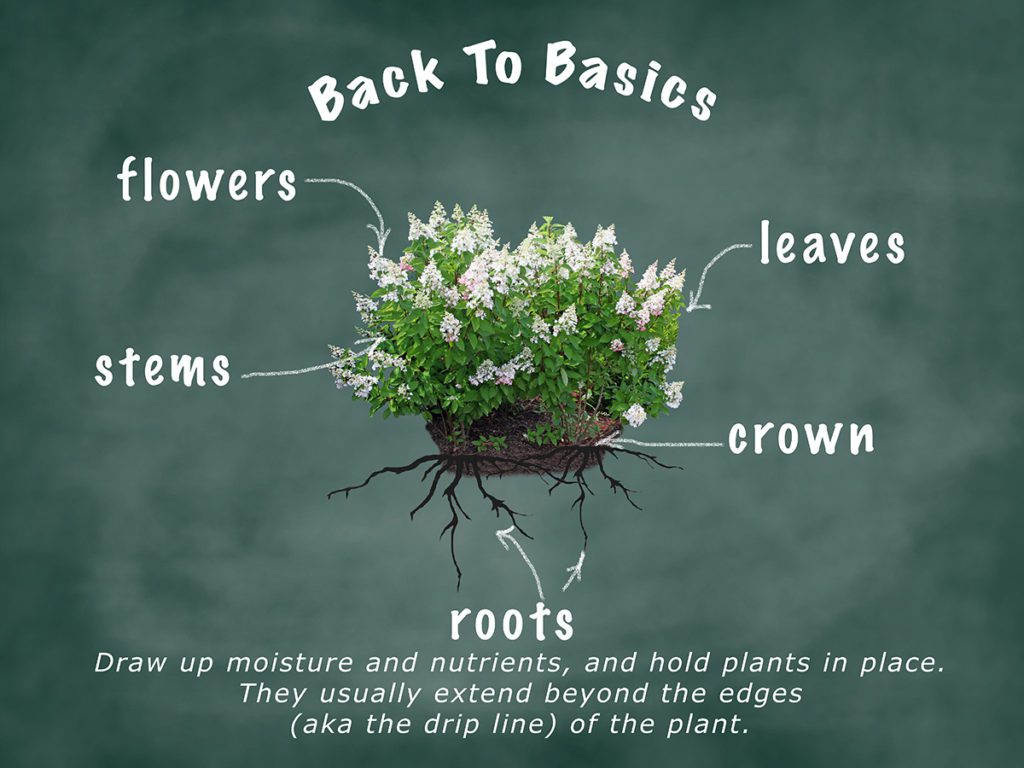
ROOTS – Knowing that the roots draw up the water and nutrients tells us to pay attention to what’s happening underground. If our soil is very hard and compact, for example, the plant can’t grow the root system that it needs to make the top grow well. If we water too shallowly, this creates a reduced root growth, and this too prevents the tops of the plant from performing well. Knowing that in nature a plant’s roots are fed by organic matter that falls on the surface of the soil and decomposes from the top down, tells us that a key part of keeping a root system healthy is keeping the ground covered with an annual top-dressing of mulch, chopped leaves, or compost.
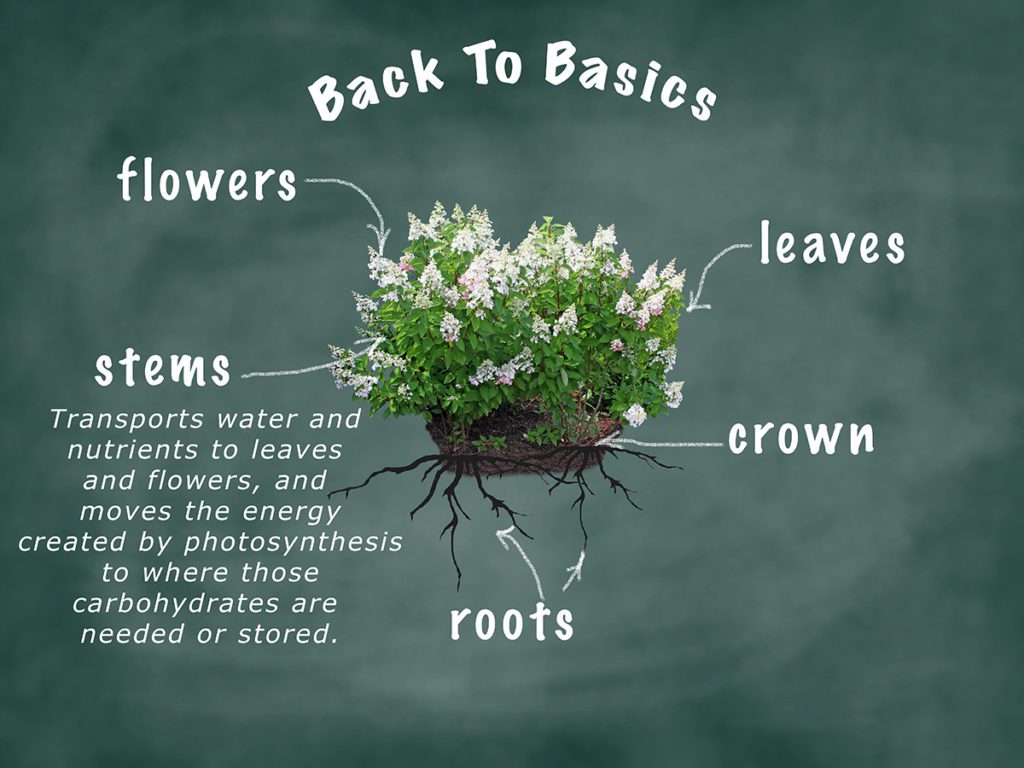
STEMS – These support the leaves and transport moisture, minerals and energy produced by foliage. Stems move water and nutrients up to the leaves and transfer the products of photosynthesis back down to the roots. This tells us why it’s important not to tie ropes, chains or other cords tightly around a shrub or tree: as the stem grows that tie will choke the stem, preventing the passage of water and energy. Stems need to be strong to support the leaves and flowers as well; this reminds us not to over-fertilize plants and create overly large but weak growth. Stems also need to be able to move in the wind, because it’s such environmental stimulation that makes stems stronger. Knowing this reminds us to remove a stake that may have been tied against a plant in its youth in order to make a trunk or stem straighter.
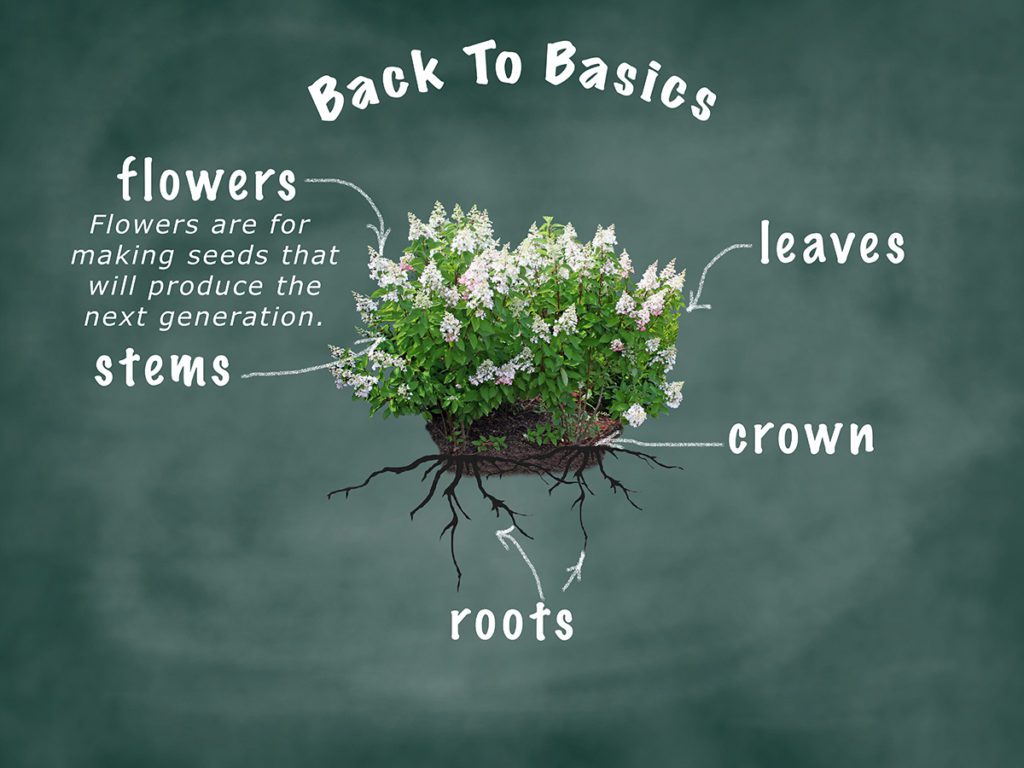
FLOWERS – The bloom is for producing seeds. This can explain why many flowers wilt once they are pollinated. We remove the pollen-laden stamens off of Easter lilies, for example, not just because they can stain our clothing and furniture, but because if that pollen gets onto the stigma in the center of the flower pollination occurs and the flower will promptly wilt. Knowing that the seeds are the end goal for a plant tells us why removing fading flowers will help keep many annuals and perennials flowering longer; it’s not the wilting bloom that we’re removing, it’s the developing seeds. If that petunia or marigold hasn’t yet produced seeds, it will continue to make more flowers in an effort to do so.
Knowing that the seeds follow the flowers is also useful if you want to prevent a plant from producing dozens to hundreds of babies in the future. People don’t like the many children that a some Rose of Sharon produce, so knowing that you can cut off the seed pods that start to develop after the flowers fade will save hours of pulling those baby shrubs from your gardens. And removing flowers from weeds will prevent those unwanted plants from spreading.

1 Comment
Leave a Comment
Subscribe To Our Newsletter
Sign up for our weekly email about sales and events.

This is wonderful!